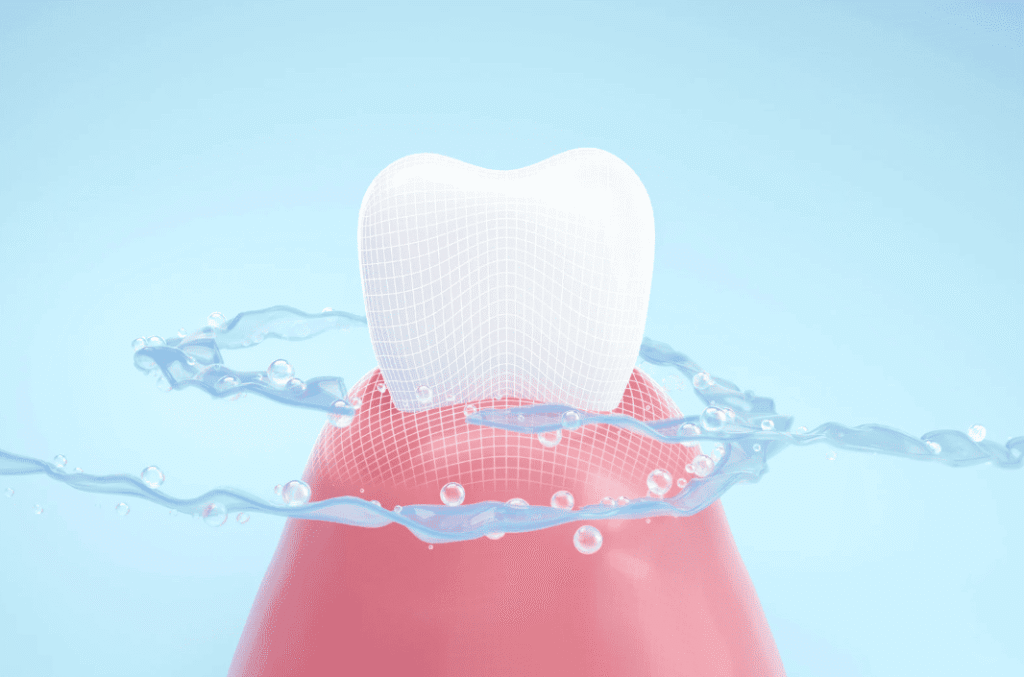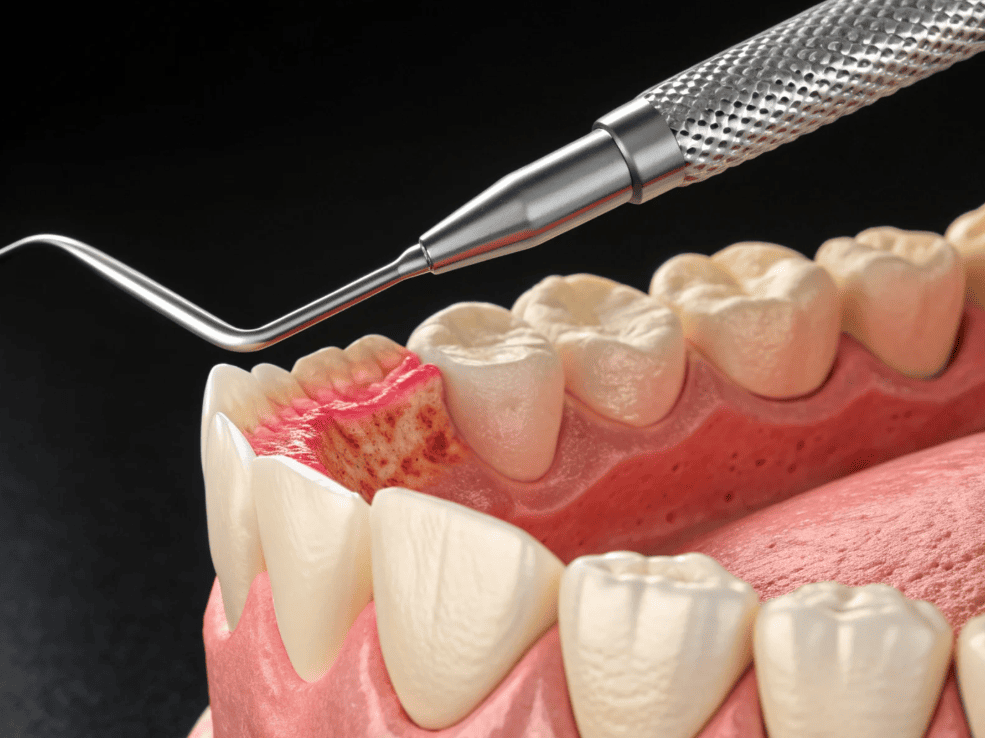
The Complete Guide to Orthodontics: Costs, Process, and Types of Braces
Braces Orthodontics is a common dental treatment designed to correct tooth alignment, improve bite function, and enhance smile aesthetics. Whether for health or appearance, braces can bring significant improvements. With advancing technology, orthodontic treatment options have become increasingly diverse. This article delves into the costs, process, and types of braces, helping you understand the treatment and decide if it’s right for you.
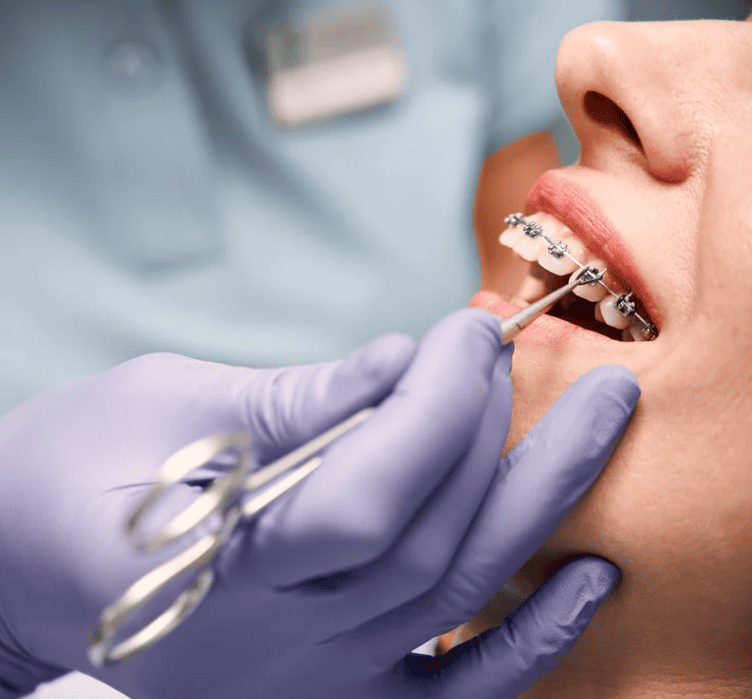
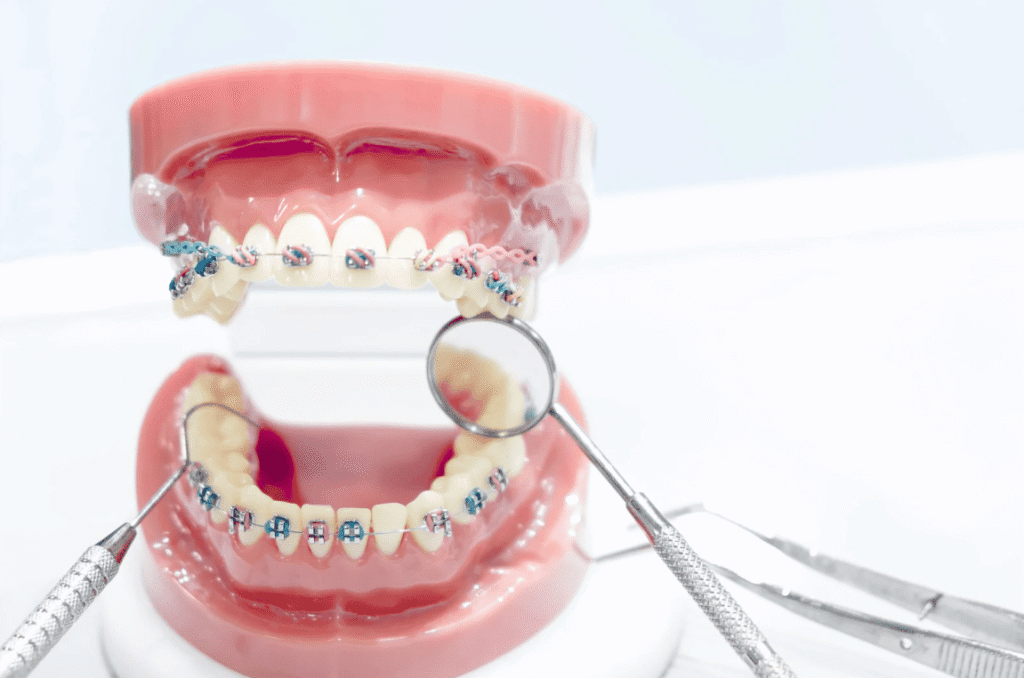
What Is Orthodontics? Why Is It Necessary?
The Principle of Orthodontics: How It Aligns Your Teeth
Orthodontics, commonly known as braces, is a specialized dental treatment that combines scientific precision and advanced technology to reposition teeth and improve bite function. The core mechanism involves the following key processes:
Tooth Movement
Orthodontic appliances (such as metal braces, ceramic braces, or Invisalign clear aligners) apply gentle, consistent pressure to guide teeth into their desired positions within the alveolar bone. This pressure stimulates the surrounding periodontal tissues, facilitating controlled tooth movement.
Bone Remodeling
As teeth shift, the alveolar bone reshapes around their new positions, ensuring long-term stability of the corrected alignment.
Bite Optimization
Beyond aligning teeth, orthodontics corrects bite issues, such as overbites, underbites, or gaps, to achieve a balanced and functional occlusion.
Why Is Orthodontics Necessary? A Long-Term Investment in Health and Confidence
Orthodontics is more than a cosmetic enhancement; it is a transformative investment in oral health and overall quality of life. Below are four key reasons why orthodontics may be essential:
Enhanced Oral Health
Misaligned teeth create hard-to-clean areas, increasing the risk of plaque buildup, cavities, and gum disease. Orthodontics aligns teeth for easier cleaning, reducing the likelihood of dental issues and promoting long-term oral health.
Improved Bite Function
Bite problems, such as overbites, underbites, or crowded teeth, can lead to chewing difficulties, excessive tooth wear, or temporomandibular joint (TMJ) pain. Orthodontic treatment corrects these issues, enhancing chewing efficiency and minimizing stress on teeth and jaw joints.
Boosted Confidence
A well-aligned smile is a powerful asset in workplaces and social scenes. Whether in boardrooms, restaurants, or public speaking engagements, straight teeth enhance appearance, fostering greater self-assurance in professional and personal interactions.
Prevention of Future Dental Issues
Misaligned teeth can contribute to root damage, gum recession, or uneven bite pressure, potentially requiring complex dental treatments later. Orthodontics serves as a preventive measure, mitigating these risks and saving patients from costly and uncomfortable procedures in the future.
Learn More: Visiting our Braces Service Page for detailed information on our orthodontic services.
Start Your Orthodontic Journey Today!
We provide orthodontic treatment to helping you achieve a confident, healthy smile. Our experienced team offers personalized care for all your oral health needs.
Diestel Dental Group 5 clinics in HK—choose the one most convenient for you:

We Accept Health Care Vouchers!
Smith & Jain Dentist
(Our Flagship)
Diestel & Partners
(Dental Surgeons)
Bayside Dental
Tung Chung
Bayside Dental Discovery Bay
North Plaza
Bayside Dental Discovery Bay
Main Plaza (New Clinic)
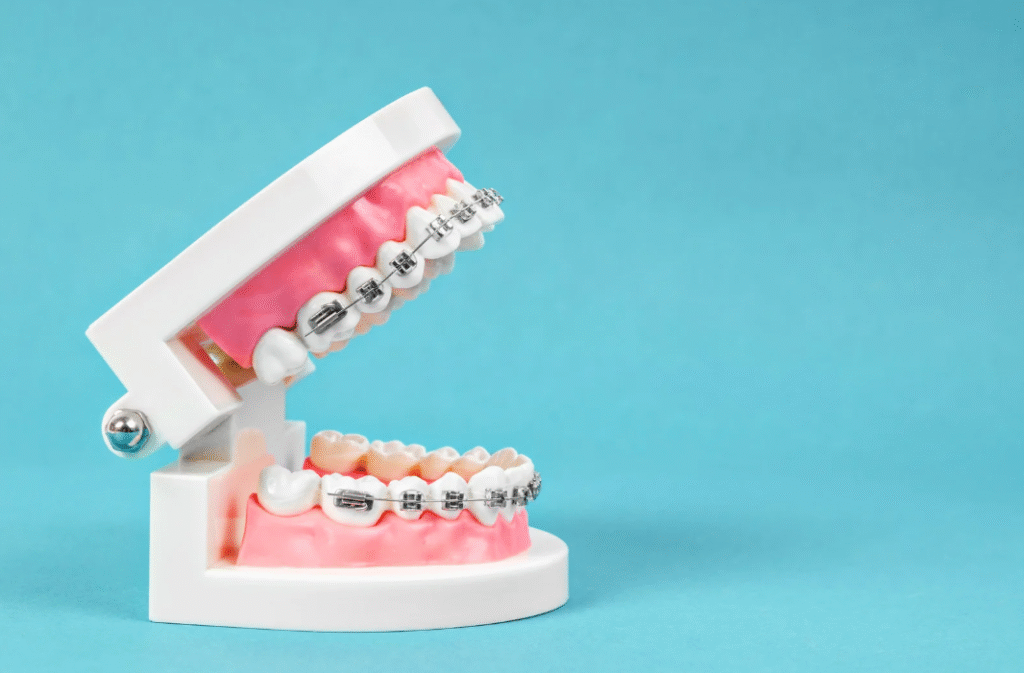
Types of Braces: Which Is Right for You?
Orthodontic treatment offers a variety of braces, each with distinct advantages and suitability depending on your needs. Below are three common options to help you choose the best fit:
1. Traditional Metal Braces
- Features: Constructed from stainless steel brackets and wires, known for their durability and strength.
- Suitable For: Patients with severe tooth misalignment or complex bite issues, such as deep overbites or crowding.
- Advantages:
- Highly effective for significant corrections.
- More cost-effective compared to other options.
- Disadvantages: Noticeable appearance, which may affect aesthetics.
- Tip: Use interdental brushes to clean between brackets regularly, preventing food debris buildup and reducing the risk of cavities.
2. Ceramic Braces
- Features: Made with tooth-colored ceramic brackets, blending closely with natural teeth for a discreet look.
- Suitable For: Adults or teenagers prioritizing aesthetics, particularly those in professional or social settings.
- Advantages:
- Natural, less noticeable appearance, ideal for public-facing roles.
- Effective correction similar to metal braces.
- Disadvantages: Ceramic material is more fragile, and costs are higher than metal braces.
- Tip: Avoid coffee, tea, or staining foods to prevent discoloration of the ceramic brackets.
3. Invisalign (Invisible Aligners)
- Features: Transparent, removable plastic aligners that are nearly invisible.
- Suitable For: Patients with mild to moderate misalignment, such as minor gaps or crowding.
- Advantages:
- Highly aesthetic and comfortable, with minimal impact on appearance.
- Removable for eating and cleaning, allowing unrestricted diets.
- Disadvantages: Requires discipline to wear aligners for 20-22 hours daily for optimal results.
- Tip: Replace aligners on schedule and maintain oral hygiene with regular brushing and aligner cleaning.

Benefits of Orthodontics: More Than Just Aesthetics
Orthodontic treatment not only enhances the beauty of your smile but also delivers significant health benefits. Here are the key advantages of braces, making them a worthwhile investment for Hong Kong patients:
Improved Bite Function
Correcting misaligned bites reduces tooth wear and lowers the risk of temporomandibular joint (TMJ) pain, ensuring comfortable chewing and long-term oral health.
Enhanced Oral Hygiene
Straight teeth are easier to clean, reducing plaque buildup and minimizing the risk of cavities and gum disease, which is especially important in Hong Kong’s food-loving culture.
Boosted Confidence
A radiant smile elevates personal appearance and social confidence, empowering you in professional settings, social gatherings, or public speaking engagements.
Long-Term Health Protection
Misaligned teeth can lead to root damage or gum issues. Orthodontics prevents these problems, saving you from costly and complex dental treatments in the future.

Orthodontic Treatment Process: From Consultation to Completion
Orthodontic treatment, or braces, is a meticulous process requiring professional expertise and patient cooperation to achieve optimal tooth alignment and bite function. Below is an overview of the standard treatment stages commonly followed by dental clinics in Hong Kong, helping you understand the journey to a perfect smile:
1. Initial Consultation and Examination
- Details: The dentist conducts a comprehensive oral examination, assessing teeth, gums, and bite alignment. X-rays or 3D digital scans (e.g., iTero system) are used to analyze bone structure, providing a scientific foundation for treatment.
- Goal Discussion: Patients discuss their objectives, such as improving aesthetics, enhancing chewing function, or addressing bite issues. The dentist offers personalized recommendations based on these goals.
- Duration: Approximately 30 to 60 minutes, painless and straightforward.
- Tip: Bring past medical records (e.g., history of gum disease or surgeries) to help the dentist evaluate factors that may impact treatment.
2. Creating a Personalized Treatment Plan
- Braces Selection: Based on the patient’s budget, aesthetic preferences, and dental condition, suitable orthodontic appliances are chosen, such as traditional metal braces, ceramic braces, or clear aligners like Invisalign.
- Estimated Timeline: Mild misalignment typically requires 6 to 12 months, while complex bite issues may take 18 to 36 months, depending on the case.
- Cost Estimate: The dentist provides a detailed cost breakdown and discusses flexible payment options, such as installment plans.
- Technological Advantage: Hong Kong clinics often employ digital orthodontic simulation, using 3D imaging to preview post-treatment results, enhancing precision and patient confidence.
3. Wearing Braces and Regular Adjustments
- Installation Process: Metal or ceramic braces involve bonding brackets and connecting wires; clear aligners provide an initial set of transparent trays, replaced per a digital plan.
- Follow-Up Schedule: Patients typically visit every 4 to 6 weeks for adjustments to ensure teeth move as planned.
- Experience: Mild pressure or discomfort may occur initially or after adjustments, but most patients adapt within a few days.
4. Completing Treatment and Maintaining Results
- Braces Removal: Once teeth are properly aligned, the dentist removes the braces or discontinues aligner use.
- Retainer Use: To prevent teeth from shifting, patients wear fixed or removable retainers, typically at night.
- Long-Term Follow-Up: Regular check-ups every 6 to 12 months are recommended to monitor results and maintain oral health.
Learn More: Visit our Braces Service Page for practical tips to prepare for your orthodontic journey and optimize your experience.
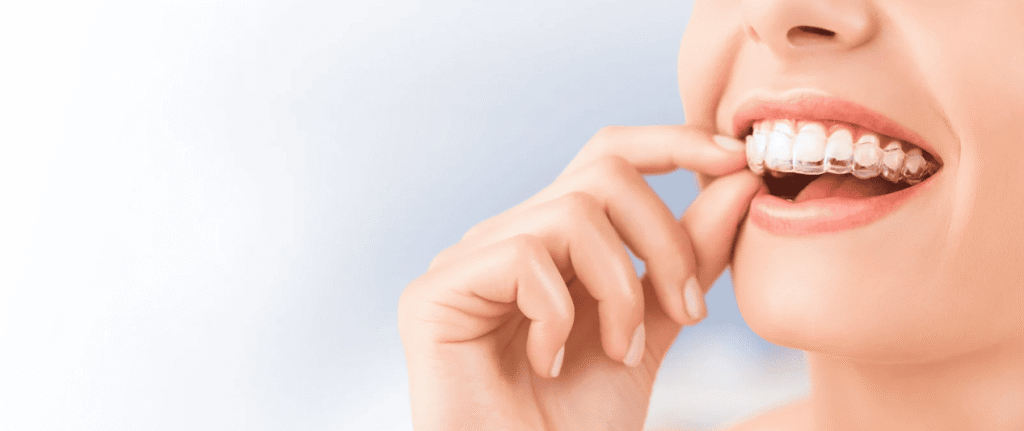
Orthodontic Costs: A Detailed Guide for the Hong Kong Market
In Hong Kong, the cost of orthodontic treatment varies depending on the type of braces, the complexity of the case, and clinic-specific factors. Below is an overview of the cost structure and key considerations to help you plan your financial arrangements effectively:
Cost Components
- Orthodontic Appliances: Costs differ based on the type of braces, such as traditional metal braces, ceramic braces, or clear aligners (e.g., Invisalign). Factors like material, technology, and aesthetic appeal influence the price.
- Diagnostic Fees: Includes initial consultations, X-rays, and 3D digital scans to create a precise treatment plan.
- Follow-Up and Adjustment Fees: Regular visits for brace adjustments and progress checks incur costs, varying by frequency and treatment stage.
- Retainer Fees: Post-treatment retainers, either fixed or removable, are necessary to maintain results, with costs depending on the retainer type.
- Additional Treatments: Procedures like wisdom tooth extraction or periodontal care may add to the overall cost.
Factors Influencing Costs
- Dental Condition: The severity of tooth misalignment or bite issues directly affects treatment duration and cost. Complex cases typically require longer treatment and higher expenses.
- Dentist Expertise: Treatments by experienced orthodontic specialists may come at a premium, but their expertise ensures superior outcomes.
- Clinic Location and Facilities: Clinics in commercial areas like Central or Tsim Sha Tsui, or those equipped with advanced technology, may have higher fees.
- Technology Used: Treatments utilizing digital orthodontic simulations or advanced clear aligner systems often cost more than traditional methods.
*For personalized cost estimates and treatment options, contact our clinics to discuss flexible payment plans tailored to your needs.
Conclusion: Invest in Your Smile, Unlock a Confident Future
Orthodontic treatment is more than an aesthetic upgrade; it’s a long-term investment in oral health and personal confidence. In Hong Kong, high-quality dental services make the braces journey efficient and comfortable. Whether you choose traditional metal braces, stylish ceramic braces, or discreet Invisalign aligners, our expert dental team will guide you every step of the way to achieve your ideal smile.
Ready to transform your smile? Contact Us to book your orthodontic consultation and start your journey!
Start Your Orthodontic Journey Today!
We provide orthodontic treatment to helping you achieve a confident, healthy smile. Our experienced team offers personalized care for all your oral health needs.
Diestel Dental Group 5 clinics in HK—choose the one most convenient for you:

We Accept Health Care Vouchers!
Smith & Jain Dentist
(Our Flagship)
Diestel & Partners
(Dental Surgeons)
Bayside Dental
Tung Chung
Bayside Dental Discovery Bay
North Plaza
Bayside Dental Discovery Bay
Main Plaza (New Clinic)
Frequently Asked Questions: Addressing Your Orthodontic Concerns
Orthodontic treatment (braces) may raise many questions. Below are the most common concerns from patients, along with professional answers to help you understand the process fully:
Will Braces Cause Significant Pain?
In the initial stages of wearing braces or after adjustments, you may experience mild soreness or pressure, a normal response to tooth movement. This typically subsides within 3 to 5 days. Dentist recommendations:
- Opt for soft foods, such as porridge or yogurt, to minimize discomfort.
- If needed, use over-the-counter pain relievers (e.g., ibuprofen) as directed by your doctor.
- Apply orthodontic wax to metal braces’ brackets to reduce irritation to oral tissues.
How Long Does Orthodontic Treatment Take?
Treatment duration varies depending on dental conditions:
- Mild misalignment: Approximately 6 to 12 months.
- Moderate misalignment: Around 12 to 18 months.
- Complex cases (e.g., skeletal issues): May require 18 to 36 months. Hong Kong dental clinics often use digital orthodontic technologies, such as 3D scanning and simulation, to accurately predict treatment timelines, giving you clear expectations.
How Can I Maintain Oral Hygiene During Treatment?
Braces can make plaque buildup more likely, so diligent oral care is essential:
- Cleaning Tools: Use interdental brushes, floss, or water flossers to clean between braces or aligners, ensuring no food debris remains.
- Brushing Frequency: Brush 2 to 3 times daily for at least 2 minutes each time, using a soft-bristled toothbrush to protect gums.
- Mouthwash: Use fluoride mouthwash to strengthen teeth and prevent cavities.
- Professional Cleanings: Schedule dental cleanings every 6 months to maintain gum health.
What Is the Ideal Age for Braces?
Orthodontics has no age limit and is suitable for:
- Teenagers (12–18 years): During tooth development, achieving optimal results with metal or ceramic braces.
- Adults (18+ years): Professionals often choose Invisalign or ceramic braces for aesthetics and functionality.
- Seniors: As long as gums and bone are healthy, treatment is viable even beyond age 60. Your dentist will assess oral health to confirm suitability for braces
Will Braces Affect Daily Life?
- Diet: Avoid hard foods (e.g., nuts) or sticky foods (e.g., mochi) with traditional braces to prevent damage; Invisalign allows unrestricted eating due to its removability.
- Social Interactions: Ceramic braces or Invisalign offer a discreet appearance, ideal for meetings or social events.
- Sports: Use a mouthguard during physical activities to protect braces and teeth.
Disclaimer
The information on the Bayside Dental Discovery Bay website is for general educational purposes only and is not a substitute for professional dental diagnosis, advice, or treatment. Consult a licensed dentist for personalized dental care.
Bayside Dental strives to provide accurate information but does not guarantee its completeness or applicability to all circumstances. Bayside Dental Discovery Bay, including its Main Plaza and North Plaza clinics, is not liable for any damages resulting from the use of this website.
External links are provided for reference only. Bayside Dental is not responsible for the content or accuracy of third-party websites.


